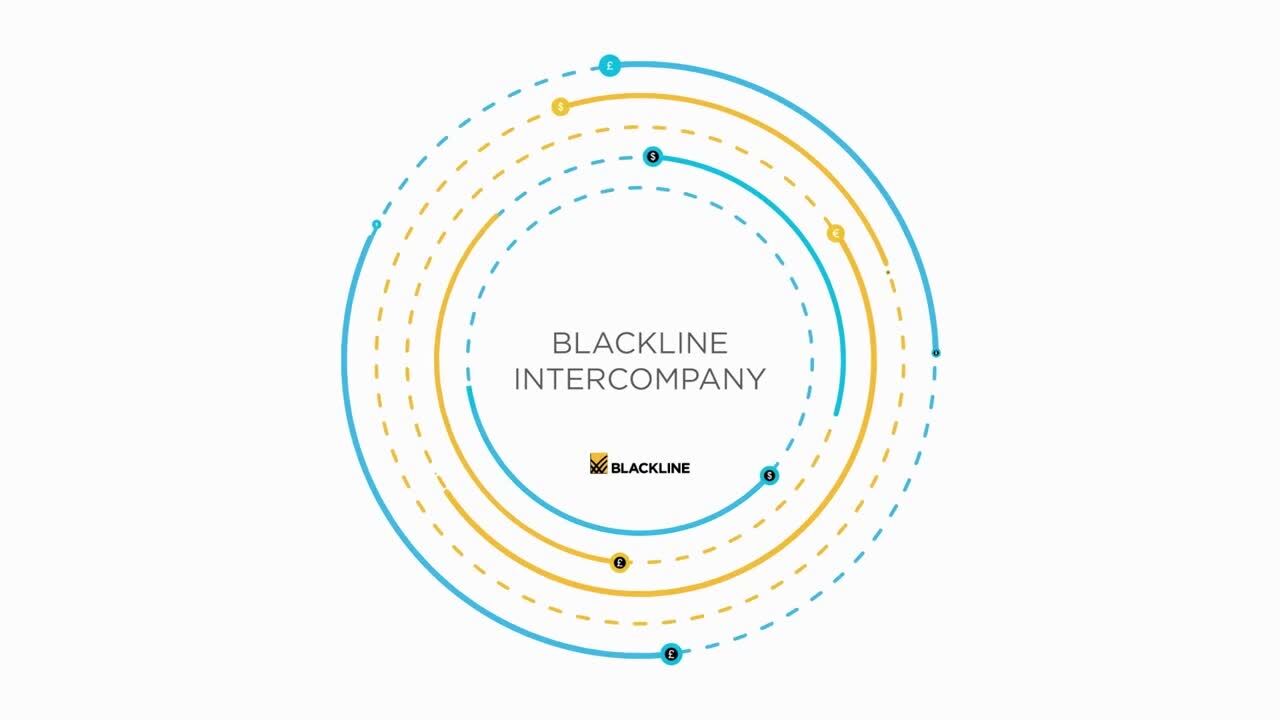BLACKLINE SOLUTION
Intercompany
Streamline your intercompany processes from transaction creation to settlement to preserve tax strategies and quickly eliminate imbalances.

Go beyond zero.
Deliver more to your business than just zero balances. Design and improve your intercompany operating model, determine tax impacts, configure billing routes, and automate your intercompany processes. Leverage AI predictive capabilities to enhance insights and reduce transaction costs. It’s time to go beyond zero to improve your bottom line, increase liquidity, and optimize your F&A talent.

Intercompany Operations Design
4:00

Intercompany Operations Excellence
4:56

BlackLine Intercompany Overview
1:46
Achieve Intercompany Operations Excellence
Improve operational efficiency
Automate intercompany accounting entries and invoice creation to maximize accounting accuracy and improve staff efficiency. With applied AI, you can gain unprecedented insights into intercompany data to prevent transaction errors before they occur and enhance decision-making with predictive guidance.
Manage global tax compliance
Model billing routes, both direct and indirect, to better inform tax planning and pricing strategies and enable group compliance, including SAFTI, GILTI, and BEAT taxes. Increase deductibility across hundreds of jurisdictions and prevent leakage.
Drive margin improvements
Offset price erosion, reduce effective tax rates, and improve transfer pricing and financial transparency by capturing intercompany charges with unprecedented granularity. Give business units the information needed to drive data-driven decisions.
Optimize working capital
Improve intercompany financing and forecasting and gain a real-time view of intercompany transactions to minimize FX exposure with increased netting and settlement efficiency.
Intercompany Solutions
Structure and automate intercompany transactions to maximize operational efficiency while improving deductibility and reducing tax leakage.

Intercompany Create
Ensure consistent regulatory and tax compliance by automating non-trade transactions and invoices while enforcing trading relationships and policies. Use applied AI to improve cost allocations, prevent charge disputes, and implement proactive measures to safeguard financial integrity.
Intercompany Balance & Resolve
Seamlessly integrate with all intercompany systems and data sources. Automatically identify intercompany exceptions and underlying transactions causing out-of-balances with rules-based solutions to resolve discrepancies quickly.
Intercompany Net & Settle
Enable greater collaboration between Accounting and Treasury with real-time visibility into open transactions. Integrate with treasury systems to facilitate and streamline netting, settlement, and clearing to optimize working capital.
Proven Results. Real ROI.
Customer Success Stories
“Intercompany imbalances have plummeted to near zero.”
Paul Dubbelman
Finance Lead, Global Business Services
Kraft Heinz

“The governments of some countries only give companies five days to provide information before issuing daily fines for non-compliance. Now we can respond to requests for information right away.”
Global Lead
Intercompany Billing Center of Excellence

“All transactional information between legal entities in our group is now in one place, which helps to drive accountability in our business through real-time visibility.”
Richard Harris
Sr. Director - Digital Operations
Baker Hughes Treasury

“Collapsing all our record-to-report accounting functions into a shared service allowed us to offer that service to any entity. It enabled us to build that work out in a tax-compliant manner that satisfied accounting and controllership guidelines. It also recovered costs where the headcount was actually performing the work.”
Global Lead
Intercompany Billing Center of Excellence

RESOURCES
Learn More

Your Guide to Breakthrough Intercompany Operations
Discover how intercompany financial management can help reduce risk, improve operational efficiency, and drive the most tax-effective intercompany processes.

The Reality of Intercompany: A Global Survey of Intercompany Stakeholders
More than 100 intercompany stakeholders report on the state of their intercompany processes, the impact on F&A operations, and the role technology plays in intercompany financial management.

The Prescription for Intercompany Success: Policy, Process, Technology
As global merger and acquisition activity continues to expand, the complexity of managing legal entity structures is giving CFOs and controllers their fair share of headaches. Explore tips from IDC on how to establish a robust foundation with end-to-end processes and automated systems.
Solutions
Consolidation & Financial Analytics
Modern Accounting Playbook
Company
© 2024 BlackLine Inc.